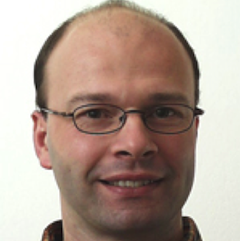
How to design and deploy a world scalable geofence service with custom Exchanges in RabbitMQ
Philippe DobbelaereDistributed Software, Cloud and IoT Specialist
How to design and deploy a world scalable geofence service with custom Exchanges in RabbitMQ
A distributed message exchange that has the capability to filter and route messages based on geofences is one of the few truly scalable ways to connect millions of sensor devices to applications without explicit sensor to app configuration. In this talk, we will present an architecture and implementation based on specially designed RabbitMQ exchanges that does just that. The architecture consists of 3 different tiers - a dispatch tier, an index tier and a post-filter tier, each with their specific custom exchange type, that work together to deliver a fully scalable geofence engine that leverages the speed, reliability and management assets from RabbitMQ.
Talk objectives:
- show how a scalable geofence engine can help in connecting millions of sensors to their respective applications - show how RabbitMQ can be leveraged in the design of a geo-aware message broker architecture
- show how dedicated messaging features can be implemented on top of custom RabbitMQ exchanges with minimal effort - show how easy it is to combine erlang with C/C++ libraries for specific algorithmic functions that are already available in C/C++
Target audience:
RabbitMQ users / designers
Internet of Things hackers
system architects
M2M platform providers
SlidesAbout Philippe
Philippe received his M.Sc. degree in Engineering and Physics from the University of Ghent (RUG), Belgium in 1988. He has been working for Alcatel-Lucent in various roles covering research, board and ASIC hardware and software design on topics ranging from ATM switches, DSL modems and high speed network processors for IP routers to advanced software architectures for distributed computing. During his work as hardware and software architect, he co-authored more than 10 patent applications in the networking and applications area. More recently at Bell Labs, he has made contributions to conferences and standardization, mainly in the area of M2M (ETSI M2M TC) and the role of semantics for M2M interoperability. He has been involved in a number of European and Flemish funded project initiatives as WP lead or project lead, and contributed to EC expert group publications on cloud computing and next-generation datacenters. His current research interests include distributed computing (and cloud computing), real-time processing in sensor networks and big data (query) applications.
